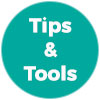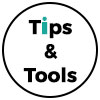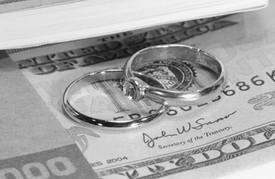Difference between revisions of "Ten Steps to Being an Executor"
Drew Jackson (talk | contribs) |
Drew Jackson (talk | contribs) |
||
| Line 177: | Line 177: | ||
{{Ombox | {{Ombox | ||
| type = | | type = | ||
| image = [[File:Tip_v3.jpg |link=]] | | image = [[File:Tip_v3.jpg|40px|link=]] | ||
| style = width: {{{width|50%}}}; background:#ffffff; border:1px solid black; left | | style = width: {{{width|50%}}}; background:#ffffff; border:1px solid black; left | ||
| textstyle = font-size:100% | | textstyle = font-size:100% | ||
Revision as of 13:03, 19 March 2017
| This information applies to British Columbia, Canada. Last reviewed for legal accuracy by Helen Low, QC in January 2016. |
Being the executor of someone's estate can be time-consuming and intimidating. This section outlines the main steps involved.
What are the key responsibilities of the executor?
On a person’s death, the executor’s responsibilities include:
- safeguarding the property left behind, such as by notifying the house insurance company if the house is now unoccupied,
- making the funeral arrangements and paying the funeral expenses from the deceased’s estate,
- locating the property, also known as assets of the estate,
- paying any debts and taxes, and
- distributing what remains of the estate among the people named in the will to receive a share of the estate, known as the beneficiaries.
 |
The executor is a trustee, bound to act for the good of the estate, even though the executor may also be a beneficiary or have a personal interest in the estate assets. The executor must put the interests of the estate before their own personal interests. As a trustee, the executor is accountable to the beneficiaries. For example, as executor, you must keep records and give all beneficiaries a final statement of accounts. |
What if you don't want to act as executor?
Before you do anything as executor, you should first decide if you are prepared to take on the responsibility. You don’t have to. However, if you start dealing with any assets of the estate, you are legally bound to continue until you get discharged. Examples of dealing with an asset include paying debts or changing the insurance on a house. You are said to have intermeddled in the estate, and you can only be relieved of being the executor by a court order discharging you.
If you haven’t started dealing with any of the estate assets, you can decline or renounce your appointment as executor by filing a form in court. The form is called a Notice of Renunciation. If the documents required for the grant of probate (explained below) have not already been filed in court, you will also need to file them with your renunciation.
If two people are named as co-executors, one of the co-executors can decide they do not want the job. It will not be necessary for the co-executor who does not want the job to complete the Notice of Renunciation form.
If there is no co-executor, the alternate executor can take over, as most wills name an alternate in case the executor is unable to act. If there is no alternate named in the will, someone will have to apply to court to become administrator of the estate. The process is similar to the process to probate the will, described below.
 |
"I found out after my brother died that he had named me executor. He didn’t ask me first. Although I loved my brother, I didn’t want the job. I was 78 years old. Also, I live in Alberta and he lived in BC. It was going to be too difficult. So I signed a Notice of Renunciation form, and the alternate executor took over." - Henry, Edmonton |
Step 1. Locate the will
As executor of someone’s estate, your first step is to locate the original will. The will may have instructions about the will-maker’s wishes for organ donation, burial or cremation, and their funeral or memorial service. You need the original will if you are required to probate the will.
How can you find the will?
The original will may be in the will-maker’s home, in a safety deposit box, or at the office of the lawyer or notary public who drafted the will.
To check on the location of the will, you can do a search of the Wills Registry maintained by the provincial government’s Vital Statistics Agency. See below for details on how to do the search. If the will-maker filed a notice of their will with the Registry, the search certificate will indicate the location of the original will. Filing a Wills Notice is optional, so it’s possible the will-maker didn’t file a notice or may have since moved the will or revoked it.
If you need to look in a safety deposit box for the original will, make an appointment with the financial institution. You will need a key to the box, your own identification, and a copy of the death certificate (see below for how to get a copy). If you can’t find the key, the bank may permit the box to be drilled open for a charge.
If the will is in the safety deposit box and names you as executor, the bank will let you take the will. With a bank representative, you must make a list of the contents of the box and leave the list in the box before you remove any contents. You will need a copy of this list if you are required to probate the will.
How do you search the Wills Registry?
You can search the Wills Registry by submitting a completed application form and fee to the Vital Statistics Agency. If you are not a lawyer or notary public, you must provide a copy of the death certificate with your search application. See the Vital Statistics Agency website for the application form, the current fee, and instructions. Their contact information is:
- Vital Statistics Agency
- Victoria: 1-250-952-2681
- Toll-free: 1-888-876-1633
- www.vs.gov.bc.ca
You will be provided with a Certificate of Wills Search. You will need a copy of this certificate if you are required to probate the will.
How do you get a copy of the death certificate?
The death certificate may be obtained by the funeral services provider, or you can order a death certificate from the Vital Statistics Agency. See the Vital Statistics Agency website at www.vs.gov.bc.ca for the application form, the current fee, and instructions. You may want to order more than one death certificate so you can deal with more than one institution at a time.
Step 2. Confirm the validity of the will
Once you've located the will, what's the next step?
Once you are confident you have the original last will of the will-maker, make sure that it is valid. There are several ways in which a will might be invalid or might need to be rectified by a court:
- It might not have been properly witnessed or signed: For example, a will must be signed at the end by the will-maker in front of two witnesses present at the same time.
- The will-maker might not have had the legal capacity to make a will: To make a will in BC, a person must be age 16 or over and mentally capable of making a will.
- The will-maker might have been under duress or subject to undue influence: A will or a gift in a will may be invalid if the will-maker was dominated by or dependent upon another person who persuaded the will-maker to make the gift.
If any of these concerns arise, it is important to seek the advice of a lawyer.
 |
If you have concerns about the validity of the will, or a reasonable belief that a newer will exists, it is important to seek professional advice before taking any further steps in relation to the estate. |
Can a witness to a will receive a gift under the will?
It used to be that a person who witnessed a will could not also be a beneficiary. But now, a witness may be able to inherit under a will. The witness has to apply to court and show that the will-maker intended to make the gift even though the beneficiary was a witness to the will. If the court isn’t satisfied, the gift to the witness is void. Either way, the remainder of the will is not affected.
Step 3. Protect the assets
As the executor it is your responsibility to protect the assets of the deceased. You should make sure the assets are safe and properly insured. For example:
- If the deceased's home is not occupied, make sure the home is secured, appliances turned off, and any pets are looked after. If the home is to remain vacant, tell the police.
- Make sure any vehicle owned by the deceased is locked in a safe place.
- Safeguard any wallet, purse or briefcase owned by the deceased.
- Secure the deceased’s key pieces of identification, such as their social insurance card, medical card, driver’s licence, and passport.
- Search for credit cards, cash, jewelry, securities, and other valuables, and arrange for their safekeeping.
- Check on the insurance of the home and any vehicles. Check the expiry dates of the insurance. If the deceased lived alone, check the vacancy provisions to ensure that the coverage continues (most home insurance is cancelled automatically if the home is vacant for more than 30 days).
What other things should you do right away?
Other steps you should take to protect the assets include:
- Notify financial institutions where the deceased held accounts.
- Cancel any credit cards.
- Cancel any subscriptions and redirect mail to a safe location.
- Apply for Canada Pension Plan death benefits.
- If the deceased owned a business, arrange for its ongoing management.
- If the will includes a trust, take steps to ensure that the assets that form part of the trust are properly invested or kept in a safe place.
 |
A trust is a part of the estate that is set aside in the will for a beneficiary, often a child, on certain terms. For many estates, the executor is often also the trustee. The trustee is responsible for:
|
Step 4. Arrange the funeral
The executor is responsible for the funeral arrangements and paying the funeral expenses. There are many decisions to make when arranging the funeral, usually in a very short time period. For example:
- Where and when will the funeral be?
- Will the deceased be buried or cremated?
- Will there be an obituary notice or funeral announcement published in the paper?
Often people leave instructions about what they want, either in their will or a letter. When possible, arrangements should be in accordance with the will-maker’s wishes. You’ll also want to consider the wishes of the relatives.
Are the will-maker's wishes binding on the executor?
Where the will sets out the will-maker’s wishes for burial or cremation, those wishes are binding on the executor, unless they are unreasonable or impracticable or cause hardship. If as the executor you are unwilling or unable to give instructions on the question of burial or cremation, the spouse may.
If there is any question about what the person wanted, the executor has the legal authority to decide.
 |
To pay the funeral expenses, you could take the invoices to the bank where the deceased kept an account. If there’s enough money in the account, the bank will typically give you funds from that account to pay the expenses. |
See the People's Law School publication A Death in Your Family for more on making the funeral arrangements.
Step 5. Communicate with beneficiaries
Once the funeral is over, family members and beneficiaries are often anxious to know about the estate, what happens next, and when they will receive their inheritance.
Once you understand the terms of the will, it is important to communicate with the beneficiaries. Although it’s not mandatory to hold a meeting with the beneficiaries, doing so allows you to:
- review the terms of the will and explain next steps,
- set expectations around timelines for administering the estate and distributing the assets,
- discuss the different duties and liabilities of the executor,
- request approval for compensation, if you intend on charging a fee,
- gather personal information from the beneficiaries (for example, their full name, address, and Social Insurance Number), and
- discuss how the personal assets will be divided.
Step 6. List the assets and liabilities
Making an inventory of the estate is one of your most significant tasks as executor. The inventory lists the estate assets and liabilities, valued as at the date of death.
Among the steps to take to identify the assets are:
- Bank accounts: Contact the will-maker’s bank or credit union to gather information on account balances, loans outstanding, and investments held as of the date of death. You may want to put all money into one account for the estate.
- Life insurance: Begin claims on life insurance policies including group insurance or other plans.
- Wages and benefits: Contact the will-maker’s employer to verify any income owing and to determine any benefits to which the spouse or family may be entitled.
- Government benefits: Contact Canada Pension Plan and Old Age Security to cancel pension benefits. Establish whether any surviving spouse or children are eligible for survivor or continuing benefits.
- Investments: Locate all original investment certificates, stocks, or bonds, and obtain the market value as of the date of death.
- Real estate: List all real estate that the will-maker owned alone or with others. List any mortgages. Have appraisals done, as of the date of death, on any properties that were not jointly owned.
- Personal possessions: List any other assets, including cars, boats, household goods, jewelry, electronic equipment, collections such as coins or art, and other personal effects. Estimate values. Where you’re not sure, get an appraisal.
Letters requesting this information will need to include proof of death and a copy of the will to demonstrate your authority to act on behalf of the estate. If the third party will not release the information about the estate assets, you may need to consult with a lawyer for assistance.
 |
As executor, you are responsible to account for the estate assets. Keep records of all income received and any expenses paid. Keep all receipts. Keep copies of all letters and forms you send. |
|
|
As executor, you are responsible to account for the estate assets. Keep records of all income received and any expenses paid. Keep all receipts. Keep copies of all letters and forms you send. |
 |
As executor, you are responsible to account for the estate assets. Keep records of all income received and any expenses paid. Keep all receipts. Keep copies of all letters and forms you send. |
In listing the liabilities of the deceased, include:
- the funeral expenses,
- any amounts owing relating to their home, including utilities, rent, or strata fees,
- any professional fees,
- if the will is probated, the probate fees,
- municipal and income taxes owing, and
- all other claims as of the date of death.
What can you do to protect yourself from liability?
As the executor, you could be personally liable if you don’t pay the deceased’s debts, including any taxes owed, before you distribute the estate.
To find out who the deceased owed money to, look in the deceased’s records for evidence of mortgages, loans, and accounts with outstanding charges.
Depending on the circumstances, you may want to advertise for possible creditors. Advertising for creditors involves placing a notice in the BC Gazette, a government publication. A creditor will have 30 days after publication of the notice to come forward with a claim against the estate. After 30 days, you may distribute the estate and you will not be liable for any claim that wasn’t brought forward.
 |
An executor must notify a surviving spouse that he or she may have a right to the spousal home. If the executor disposes of the home without having provided proper notice, the executor may be liable. |
Step 7. If necessary, apply for probate
As the executor, you may need to probate the will. In the probate process, you submit special forms and the will to court; see the section "Probating the Will" for details. If everything is in order, the court issues a grant of probate. This document allows financial institutions and other organizations such as the Land Title Office to rely on the will as being the last will made by the will-maker.
When is probate required?
Not all wills need to be probated. If the estate involves less than $25,000, probate is not typically required.
It depends in part on the type of assets involved. Not all things owned by the will-maker form part of the estate. Certain types of assets “pass outside the will.” For example, property owned jointly by the will-maker and someone else automatically becomes the exclusive property of the other joint owner. Examples include a joint bank account or a house owned in joint tenancy. As the executor, you will be able to transfer these assets to the joint owner without a grant of probate (note that you will need to provide the death certificate).
Assets where the will-maker designated a beneficiary also pass outside the will. The beneficiary is entitled to receive the proceeds on the death of the owner. Examples include a life insurance policy or a retirement benefit plan where the will-maker designated a beneficiary.
Many couples will hold all their assets through joint ownership or with beneficiary designations so when one of them dies, no probate is required.
What if the will-maker owned land?
If the will-maker owned land other than in joint tenancy, then probate is required. For example, if the will-maker’s only asset was 10 percent of a piece of property in BC worth $200,000, the value of the estate would be $20,000 (less than the $25,000 threshold). However, the Land Title Office will still require that you provide a grant of probate to transfer the land.
What if the estate involves more than $25,000?
If the estate assets are worth more than $25,000, probate will usually be required. It is up to the institutions who hold the assets whether they will transfer them to you without probate. Check with the institutions that hold the deceased’s assets to find out what they require.
Step 8. Deal with debts and taxes
If probate is required, once you have the grant of probate, you will be able to transfer the estate assets into your name as executor. With the assets, you can then settle the deceased’s debts and any expenses that you incur in the course of administering the estate.
 |
If the estate does not have enough money to pay all outstanding debts, it is very important to get advice from a lawyer as soon as possible so that you do not become personally liable for the debts. |
Prepare and file income tax returns
As executor, you must file income tax returns for the deceased and possibly for the estate:
- You must file a tax return for the deceased for the year of death.
- If the deceased had not filed a return for any year before the year of death and tax is payable, you must file a tax return for the person for those prior years.
- If the estate earns any income before distribution to the beneficiaries, you must file a tax return for the estate for each year after the date of death.
- If the will establishes a trust, you must file a tax return for the trust.
If the deceased had assets or income in another country, you may need to file a foreign income tax return as well.
After the income tax is reported, assessed and paid, apply for a Clearance Certificate. For your own protection, you should have this certificate before you begin to distribute the estate. For more information, see the Canada Revenue Agency publication Preparing Returns for Deceased Persons, available at www.cra-arc.gc.ca or by calling 1-800-959-8281.
Step 9. Account to the beneficiaries
Before you distribute the estate among the beneficiaries, you must give them an accounting of your administration of the estate and they must agree with it.
Prepare a final statement of assets, debts, income, expenses and distribution. This statement is for the beneficiaries to approve. If they refuse to approve it, you will need to have the accounts reviewed by the court so that your administration is approved. This process is called the “passing of accounts.”
In the accounting, set out any executor’s fee you are charging. If the beneficiaries do not agree with the proposed executor fee, you will need to have your accounts reviewed by a Registrar of the Court, who will set the fee.
 |
The beneficiaries must approve your statement of accounts. In seeking their approval, you should ask them to sign a release. In the release, the beneficiary agrees, in consideration for receiving the gift from the estate, not to make any claims against you related to your work as executor. |
Step 10. Distribute the estate
Once you ensure that all debts, expenses and taxes have been paid, that all claims against the estate have been satisfied, and that your accounts have been approved by the beneficiaries or the court, you can distribute the remainder of the estate.
If probate is required, you may not distribute the estate until 180 days after probate is granted and no claim is made against the estate. You do this to make sure that no one is going to challenge the will. If all those who have a claim on the estate sign a form saying they will not challenge the will, you can go ahead sooner.
Who can challenge the will?
In general, the will-maker is free to leave their estate to whomever they want. However, the law does require that the will-maker make adequate provision for the proper maintenance and support of their spouse and children. The spouse or children can apply to court for a portion of the estate that is “adequate, just and equitable in the circumstances.”
A spouse includes a common-law spouse, which is a person the will-maker lived with in a marriage-like relationship for at least the two years prior to the death of the will-maker.
How does the distribution work?
In distributing the estate, first distribute any gifts of specific property. Sometimes the will-maker attaches a separate list with the will that says who should receive particular items. That list may or may not be binding on the executor, depending on the will.
Estate assets are transferred first to the executor, and then to the beneficiary. These steps are often done at the same time. The Land Title Office has the forms for transferring real estate. Autoplan handles transfers of motor vehicles.
If any cash and belongings remain after you distribute the specific gifts, divide what remains, known as the residue, as instructed by the will. If the will does not have a residue clause, you must distribute the remainder as if there was no will. This is called “intestacy.” You will need to get legal advice if this situation occurs.



